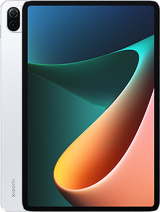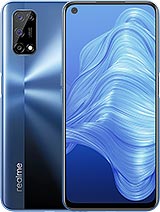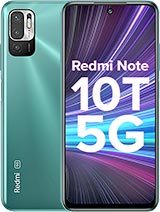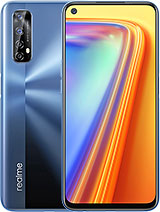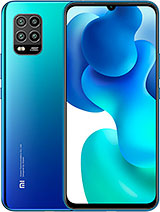Xiaomi Mi 10T Lite 5G Vs Realme 7 5G Comparison & Review By TechTablets
Hi Ron Chris here and welcome to an in-depth comparison between the realm 75g and the Xiaomi mi 10t lite 5g. So obviously, both of these are 5g phones, but we do have a difference in the chipset, so Qualcomm versus MediaTek. They both have six gigabytes of ram. They are both similarly priced phones, both have UFS, 2.1 storage and the 120 hertz IPS screens and the battery capacity too again, very, very close. So if you're confused about these two after this video, you won't be you'll, know exactly which one you want so for specs with the Realme 75g, we do have the density 800u, and we've got 128 gigabytes of storage on this particular model, which is UFS 2.1 spec, and it does have a battery capacity, which is the largest of the two, but not by much. It's 5, 000 William hours, 30 watt charging and then for all cameras.
The main camera is a 48 megapixel. This is f 1.8, and we do have an 8 megapixel ultra-wide 2 megapixels for depth.2 megapixels also used for macro the realm 75g screen. This one is 6.5 inches, full HD, plus, and I'll. Take a look at those screens. Soon it's covered with gorilla, glass, 3 and our front facing camera is 16, megapixels, f, 2.1 and then the 10 t light 5g. This one is powered by the snapdragon 750, so both mobiles are 5g.
This has 6 gigabytes of ram, so the same as the Realme 7 5g, 64, gigabytes of storage, UFS 2.1 that this particular model has and then for the battery capacity, as I mentioned slightly smaller. So this one's 4 820 William hours and a slightly faster 33 watts. Now, in this review in depth comparison, I will show you the exact charge times and battery life and the rear camera. So we do have the main camera, 64, megapixels, f, 1.9, also an 8 megapixel, ultra-wide, f 2.2 and yes, another 2 megapixel for depth and another 2 megapixel for our macro shots. The front facing camera is 16 megapixels with an f 2.5 aperture now, which one is the heaviest with my scales right here. So the Realme seven 5g is 199 grams with the larger battery, and then we have the 10 t light at a heavier 218 grams.
It does have the glass on the rear, and it probably adds to the weight, of course, so build quality of them. They're both very good, but I will go over that in detail, but just to point out that we do have a status led with the Xiaomi. So if I plug it in to charge, you'll see a little tiny white light here at the top. That's one thing: it has that the Realme does not have now, both of them side, fingerprint readers. Let's have a look at the thickness of them, so the Xiaomi is actually a little thicker.
That one is just over 10 millimeters. You can see the location of the fingerprint readers about the same place, build quality on both for their price tags. Um is actually very good. Now I prefer, I just think in hand that the Xiaomi does feel a little higher quality because of the glass, but it's both a pro and a con. So plastic frames around both of them, but we do have the plastic on the rear of the Realme in the sunshine it catches the light.
A little different gives you almost a bit of a purple, looking color, which is nice, but I just think the frame around the outside, and it just feels a little more superior. This Xiaomi here the meat 10 t pro, but of course, if you drop it, it will crack, and it will break so if we have a look at the top of them now, both of them you'll see that we've got secondary mics and an IR transmitter also on the Xiaomi. So if you need the IR blaster, you need to control, say air conditioning or TVs. Then it is the only phone out of these two that actually has that. Now, if I flip it over and take a look here at the rear of them type c, ports, of course, on both of them single downwards firing loudspeaker on both the microphone they're used for voice calls and both of them have 3.5 millimeter headphone jacks. Now, if I talk about the output quality on both of the jacks on these, I think the Xiaomi is just slightly ever so slightly superior in terms of audio output from that jack there.
Now, if we take a look at these sim trays as well, both of them take NATO sims, two of them and micro SD card. You have to give up one of the NATO sims if you are going to use a micro SD card in these so now on to the screens and the fingerprint readers, so they both have those capacitive side, fingerprint readers that I pointed out before. I think unlocking speed that it looks like it is definitely to me the real me, as you can see. That's quite quick and I'll. Now do the same with the 10 t, light, and you'll see that it's a little slower, and it takes just that second, more or half a second, more probably down to the animation, so definitely faster, fingerprint unlocking both of them are very accurate, and I do not have any issues with their fingerprint readers face.
Unlocking is also the same on both of these that it tends to be quite quick, but not quite as fast as the fingerprint reading. Of course, it's not as secure so looking at the screens, as I mentioned, there's a difference between the actual size of them, so 6.67 inches on the Xiaomi right here versus 6.5. I think the 6.5 in hand. I think this size is slightly better just a little more comfortable now in terms of maximum brightness, I have measured both of them. We have 407 knits on the Realme seven 5g versus 403 on the 10t 5g me 10t light here.
So that's an indistinguishable difference looking at them both in sunlight, they're, not brilliant. With this kind of brightness output, you can still make them out, but it's certainly not going to be as good as some of those top-end displays that, of course, in phones that are twice the price of these now, both of them have about the same in terms of touch response with these panels. They both are quite responsive, so they've turned the brightness up now here with this display test. Now, what about these IPS panels in terms of the dimming around the edges and the notches around here? Both of them exhibit a little of dimming. It is a little hard to see right now, but if I put the phone at certain angles, you can see them now.
I would rate the Realme panel has been actually marginally better in terms of that, but they're both so similar that I think overall when you're looking at these and your decision is based on the screen alone, both of them 120, hertz, refresh rate as well- that I wouldn't bother too much about that, because they are almost identical. Now, when you take a look at blacks, pretty much the same there as well in terms of how deep they look, not quite as deep as an AMOLED panel or OLED as expected. Here, you can see the cut-out with the Realme seven 5g, that it is a little dimmer just around the outside of the cutout, which is slightly wider with the 16 megapixel camera versus what we have here on the Xiaomi. If I hold that one up to the camera, you can see it's a little smaller, and it does still have that you can see slightly dimmer depending on the angle. You see it, it's really not too bothersome, and this is a little of nitpicking on my behalf.
The bezels on both are very similar, but we have a slightly taller chin here on the Realme seven 5g. Now what options do we get? Obviously, the 120 hertz refresh rate, which is great to have, and I have forced this on both of them the whole time I have been using them. You can see they've both got the override there, so by default, we've actually got an adaptive one on the real me, but I don't actually use that. Not in the time of me testing it, I always keep it forced to 120 just to keep things nice and fluid and smooth. Now they do.
Let us adjust the tint of the screen, so we can adjust the white balance on both of them. You've got different color schemes here with the Xiaomi 2, and you can also tweak that with this particular phone. So they are good there now both of the phones also do have their dark modes, which I will just activate now, so you can see what they look like and again, both of them really about the same, so I'm going to have to rate the screens as more or less even they're, both average quality IPS panels. So we do have very different processors. Here we have the dimension 800: u, which is in the Realme versus the snapdragon 750.
Both of them are 5g, both of them have 6 gigabytes of ram and both have UFS 2.1 storage, and they are both also running android 10. But we have realm UI versus mini right here and there is a bit of a difference and, of course, features and things we have, but they both offer well a similar set of features now in terms of performance, I've got them both enabled to apps draw, and you can probably see this that clearly to me and even recording this in 4k 30 frames per second. The animation on the Realme just seems to be a lot better, and I've noticed this in the time. I have been using both of these phones that it just feels noticeably smoother and faster. The Realme animations, the Realme UI, seems to be just better optimized, less bogged down and just a little more efficient.
I would say- and that is all down to- I don't believe it's the chipset. I think this is just software side of things that simply one UI has better optimization the room UI that is, and if we toggle swipe down the toggles here at the top, you will see that both of these phones- they do support uh, a few different modes on here like reading modes and they both have NFC. So if you need NFC, that's on board here with both of these, so that's great and both of them do by the way pass the security net check, and I'll show you a little of that soon. So I think when it comes to the UI performance and just general use your recent apps loading them in everything. It's definitely a little quicker from what I'm seeing here, and I hope you can see this in the video as well- that the Realme 75g has a slight edge here, so the capacity in the batteries, as I pointed out there earlier in the start, it's a slight difference.
It's not really a lot.180 William hours is not gonna really mean much now they both charged at very similar speeds. Even though the Xiaomi has 33 watt charging versus the 30, we get the dart charging on the Realme that took 57 minutes to go to 7 to 100 with a slightly larger battery, and it was 55 minutes to go to 7 to 100 here charging time on the Xiaomi, me 10 t light 5g. Now, if we take a look at our battery life, there is a bit of a difference here, so the Xiaomi seem to be a bit more efficient, the snapdragon 750 and maybe the screen. Maybe the optimization came through the better result here now both of them were set to 120 hertz, the screens. This is the exact result and both of the displays were calibrated to 120 nits of brightness as well.
Sorry, 200, nits of brightness, so exactly the same, identical there, but you do get the better battery life. I feel on the Xiaomi. However, the battery standby seems to actually be a little better on the Realme 75g GPS as well. Now we do get a slightly better average signal strength on the Xiaomi. This was taken in the same spot slightly different times here, but you can see that more or less we're getting more, actually a lot more satellites in view on the Xiaomi.
But our accuracy of one meter is a lot better on the Realme because it doesn't have a limitation. It can actually get to one meter, whereas the Qualcomm chipsets will not surpass three meters. It's a regulation. They have Qualcomm now big difference in the wireless speeds. Here I did find that it tends to just cap out, for some reason with the real me: seven won't go over 200 megabits per second, that's a problem.
I've seen before on some real sorry, the media, tech phones, and it's common there, but at the lowest signal strength point it actually got a much better speed where it counts versus the Xiaomi there. So that does make a difference. Although the Xiaomi, if you're close to the router, is a lot faster, but when you need it the most, when you're away from your wireless router, I found the Realme actually performs a little better there, which was a bit of a surprise. So this is the safety net status. So if you need your banking apps, you've got your NFC there as well.
They are going to work. So that is also good to see, and here we have our DRM info. So both of these do support wide vine level one. So, in theory, Amazon, prime video Netflix should be in full HD supporting also different uh refresh rates, as you can see there at the top, and we do have HDR 10 support on both of them as well. Here we have camera 2 API, so level 3 support on both which is good to see.
This is great, however, one being MediaTek will be a lot more difficult to get those Guam ports. So bear that in mind. If you want different performance there, so UFS 2.1 storage on both of them, but due to the difference in capacities, there is a bit of a difference here, but both very similar, as I zoom in you, can see the random reads and writes which really are the most important figures here for installing apps or running or loading them. You can see that they are similar, there's not really too much in it. It's okay, so on one hand this one's faster and then with the rights, it's a little faster there as well, so really not much they're about the same there in terms of storage, speed and an tutu.
So a bit of a difference here when it comes to the scores slightly ahead. Actually the density 800u. I didn't expect to see this, but it's actually a pretty decent chip from MediaTek. I've used the 800, it's been good, and the snapdragon is also performing well, but these are synthetic scores. So it's really the real life test.
I'll show you later on. I do a bit of gameplay what matters and how hot and how much these are going to throttle these particular mobile phones, but very similar there. You could almost rate them. There is about the same. So what about bloatware? This is where one phone has a definite downside to it in terms of bloat, but first to point out, the Xiaomi has a lot of advertising.
If this is just out of the box, okay, I have not changed anything in developer options or any settings out of the box. You're going to see this when you install apps you're going to get advertising now, I uninstalled a ridiculous 28 bloatware applications on the Xiaomi, whereas the Realme I could count, maybe four or five bloatware applications that I would consider personally as bloat, but there's just so much junk that Xiaomi crams onto their phones, especially the high-end phones, and that does really have to stop. You can see them all when you first get it, and you've got to go through and just uninstall all of those, and that is a bit of a pain. So we do have the earpiece loudspeaker and the downwards firing loudspeaker on the Xiaomi, but just the downwards firing, one on the Realme in terms of the audio qualities I mentioned the 3.5 millimeter headphone jack analog out. I believe it does actually sound marginally better on the Xiaomi.
So if you want the best audio quality for the loudspeaker for your wired headphones, definitely I would say, then I would lean towards getting the Xiaomi now if we have a listen to layouts, because now you can hear the exact difference between both of them they're, both at 100 volume and the winner for me, is the Xiaomi as you'll hear now for a little of a throttling test. So this is the wildlife stress test, 3d mark. It is actually very good, because what it's going to do is loop, the same test, which is a minute long 20 times, and we can actually see and measure which one of these chip sets the demand city, 800u or the snapdragon 750 is going to throttle the most. So this will run for 20 minutes, but I'll skip ahead to the results, of course, in this video, so hit start here. At the same time, all right, so wildfire is now just finishing up.
It looks like it finished. First there on the Xiaomi me 10 tea light and let's take a look at the throttling. Well, that was only point eight percent, so that is looking good, and we're point. Six percent throttling on the Realme and the Realme actually got a better frame per second, and you can see the performance. The score is quite a bit better.
Let me take a look there at the range fps. Let's get into that our battery, you can see the drop in battery percent right there, the frame rate from five to nine frames per second on the Xiaomi, and it was seven to nineteen on the realm seven now onto a real gaming test. So this is a game called shadow gun legends that I do test out. So I've got it set on both of these phones here to 60 frames per second. The high setting, not ultra, seems to be a little too demanding for both of these now.
I've noticed that it's a little more fluid, and this right here is the t10 light and just looking around its playable perfect, okay, but I have actually noticed that it just seems to be a little more fluid on the Realme here, which also seems to be a lot cooler, and I'll be breaking out. My thermal probe, just after this clip, and I'll see exactly how much cooler so one hour gaming, and it just seems to have better GPU performance, as we saw with those synthetic GPU benchmarks as well. So clearly, it feels a lot warmer than me TNT light here. But let's have a look now with the thermal imaging camera. Okay, so basically exactly what I was feeling with my hands that the Xiaomi definitely a lot warmer, that snapdragon 750 getting up to 40 degrees on the front, whereas the Realme seven 5g is looking to be very cool about 32 degrees.
Now I saw this in the full in-depth review of this one as well. It's just such a cool running chip now on the underside here it is a little hotter and whoa definitely hotter there on the Xiaomi, as you can see, that is getting up to now 43 degrees, which is still perfectly fine. Okay, I do sometimes see 46 degrees on the flagship phones, at least, and the back of the real me. This is up to almost 38 degrees. So clearly the thermals are just so much better on the real me, seven 5g here and finally on to our camera so side by side, camera comparison, it is close.
They actually trade blows at various different things, as you'll find out. So on to our front facing cameras. You can see there is a big difference in the crop here, it's closer on the Xiaomi on the TNT light. That's because it does have electronic image stabilization. For some reason, the Realme 75g is lacking it.
It's meant to have it and I hope it is actually coming in a firmware update. But until then, it's safe to say with front-facing video quality that the Xiaomi is clearly better, but the audio sounds actually a little better. I feel I think, on the Realme right here and as I jog ahead, you can see that massive difference that electronic image stabilization makes for front-facing vlog footage, 4k 30 frames per second video now, so they both seem to have recently good focus and video haven't seen any major issues with the video pulsing focus pulsing in and out. So as I pan around, which one here looks, the steadiest, which one has the most panning Jada, which is quite common with just electronic image stabilization, especially so no optical image stabilization on these audio nitrates, a big difference here, so 96 kilobytes per second versus 320, ultra-wide video. Now so it looks like the Realme doesn't seem to have electronic image stabilization or very little applied.
It doesn't really do that much of a good job in terms of removing these shakes. As you see as I walk along here, so I think for ultra-wide video I mean both are not amazing quality but due to the stability, I'm going to have to give the TNT light here, the wind okay, so with cameras here, you can see both of them trading blows. I think daytime stills came out a little better with the Xiaomi and then the nighttime stills came out a little better with the Realme in terms of video quality. Well, 4k Lilly's, 34k 30 frames per second, which this does support, had electronic image stabilization, whereas with the Xiaomi I double-checked, I'm on the latest firmware it is in the settings enabled but grayed out, so possibly just disabled there until Xiaomi releases. A firmware update same goes with the front-facing electronic image.
Stabilization with video didn't seem to be present either with the realm e7 now to make it clean, cut and easy for you. If you want the absolute best in terms of loudspeakers and audio quality, 3.5 minute, millimeter output, definitely the Xiaomi okay, the mi 10t light did exceed there just with better audio quality. Now, in terms of screens, I did say they were about the same. Even I couldn't really decide because they have the same brightness and the same kind of sharpness to them. However, looking at some footage now editing it and going over it, I do believe there's a slight edge in the screen performance of the real me.
Seven, five g so slightly better screen. Now both of them have plastic, build quality to them. Okay, the plastic frames around the outside the build quality, I think, is a little better on this. Xiaomi just feels slightly nicer, but I do actually like the size of the real me.75G, fingerprint, unlocking, as I pointed out, was faster on the Realme UI performance. Clearly to me in my testing, using both of these is faster on the realm 75g, so it's better more well optimized.
The realm UI just seems to be, of course, much less bloated as well. When you first get the Xiaomi, it's got so much bloatware on there. You need to spend a bit of time to remove it all. It's not too much of a problem, but hey come on it shouldn't actually be. There get a tiny bit of bloat here with the real me, but it's not actually that bad so down to thermals then and gaming performance, big difference, so the density 800u, very cool running chip maintains that performance better.
It throttled down less it generated a lot less heat and overall gave a better experience when gaming and also better battery life. When gaming, even though the Xiaomi won the battery life test with the fixed 200 nits screen calibrated continual looping test, I think the battery life in real world use actually comes out better, with better standby light battery life too, on the Realme seven. So that is my pick. This is the phone actually I would go for. It is also the cheaper device out of these two here.
So thank you so much for watching this in-depth detailed comparison. If it helped you out, if you were deciding between these, you did like this video, then please do just give a thumbs up. That will help other people find it, and why not think about subscribing for more up and coming detailed comparisons like this one reviews and lots of other videos.
Source : TechTablets

